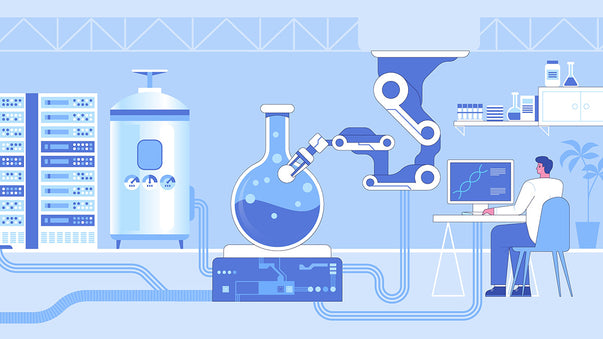Mathematical Improvement to Biological Aging Clocks

Scientists led by Yale School of Medicine have developed a new data analysis method to make epigenetic clocks substantially more reliable.
Epigenetic clocks are biomarkers based on DNA methylation. They were developed to track aging in population studies, clinical trials, and personal health applications. Intended to measure biological age, epigenetic clocks predict age-related health issues. See our previous posts on epigenetic clocks.
This approach, however, has so far been limited by noise. In fact, age measures done with previously developed epigenetic aging clocks can often differ by up to nine years when two or more measurements are estimated from the same blood sample.
A new method developed by Morgan Levine and collaborators can be used to reduce this discrepancy almost entirely. See our previous post on Levine’s work.
"Relatively little attention has been paid to the test-retest reliability of epigenetic clocks," says researcher Albert Higgins-Chen in a press release issued by Yale School of Medicine. "We found epigenetic clocks that could say you are biologically 50 years old on one test, and then 59 on the next. We started with existing, commonly used clocks, and found that a single change - the addition of a technique called principal component analysis - could preserve the aging signals while dramatically reducing noise."
Principal component (PC) analysis is a statistical technique that can be successfully used to simplify the analysis of large data sets by extracting smaller data sets that still capture essential features of the original data with a better signal-to-noise ratio. In other words, PC analysis helps important features of the data stand out from the noise.
The new method based on principal component analysis is described in a paper published in Nature Aging. An open preprint of the paper was posted to bioRxiv in 2021.
"Now, for most tests, two measurements done at the same time will differ by less than a year,” adds Higgins-Chen. “This also means that a person’s longitudinal clock change is far more likely to reflect true biological aging rather than technical noise."
"Here we show that technical noise produces deviations up to 9 years" between six standard epigenetic clocks, reads the abstract of the paper. "Our retrained PC versions of six clocks show agreement ... within 1.5 years." The researchers are persuaded that the high reliability of PC-based clocks is critical for applications to personalized medicine.
Aging researcher Josh Mitteldorf wrote a 2021 blog post with a readable explanation of the new method, and a commentary. “A new approach to methylation clocks from Morgan Levine uses massive computer resources and sophisticated mathematics,” he said. “I am enthusiastic about it, not just because it produces better results than previous methods, but because I suspect it is better aligned with the way that biological systems actually work.”
Mitteldorf is co-author with Dorion Sagan of "Cracking the Aging Code: The New Science of Growing Old - And What It Means for Staying Young." I recommend this reference book on aging. It also covers biological clocks.
Levine cautions that "while epigenetic clocks show a lot of promise as biomarkers of aging, we need to continually work to make these measures more reliable and valid if we want to someday use them to test interventions in aging and disease."
More Articles
Read more articles at Thrivous, the human enhancement company. You can browse recent articles in Thrivous Views. See other Aging Clock articles. Or check out an article below.
-
New AI Boosts Drug Discovery
Scientists at University of Washington and Harvard University have developed Artificial Intelligence (AI) software that can help create proteins. It ...
-
Here Comes the Exercise Pill
Researchers at Baylor College of Medicine, Stanford School of Medicine, and collaborating institutions have identified a molecule in the blood ...


